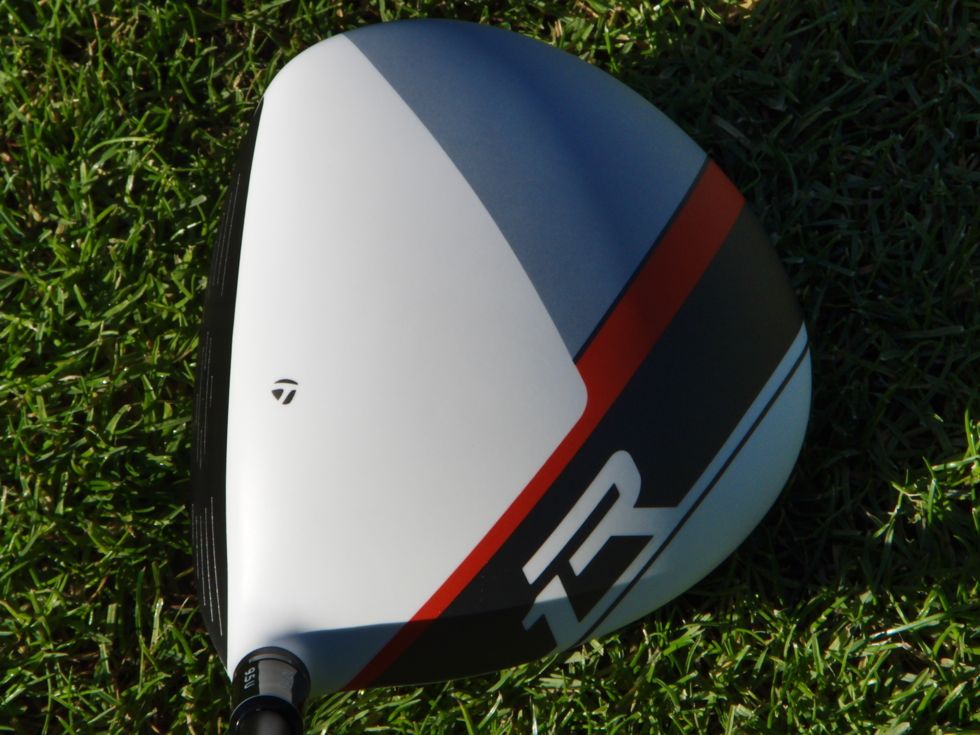 In recent years nobody has done a better job creating buzz with the release of their new line of drivers than TaylorMade. TaylorMade has such a huge presence on the PGA Tour and they take pride in their stable of players using and promoting their latest equipment. The release of the R1 driver from TaylorMade is exciting because of how much customization the driver provides to both the golfer and the club fitter.
In recent years nobody has done a better job creating buzz with the release of their new line of drivers than TaylorMade. TaylorMade has such a huge presence on the PGA Tour and they take pride in their stable of players using and promoting their latest equipment. The release of the R1 driver from TaylorMade is exciting because of how much customization the driver provides to both the golfer and the club fitter.
TaylorMade launched the R1 by telling golfers that this was their most adjustable driver they had ever made. A golfer can adjust the loft, the face angle, and the shot shape all with a single wrench.This means a golfer can go into their local pro shop and have a clubfitter tune the driver to their swing without having to switch drivers. Also if a golfer changes their swing they do not have to change drivers, they can simply adjust the R1 accordingly.
The staff at my local pro shop was very excited that they would now only need to carry a single driver and adjust it to the player rather than needing four to five drivers to make the golfer switch between during the fitting process. For this review I used a R1 with a Stiff Aldila RIP Phenom shaft.
Let’s take a look at how the club performed.
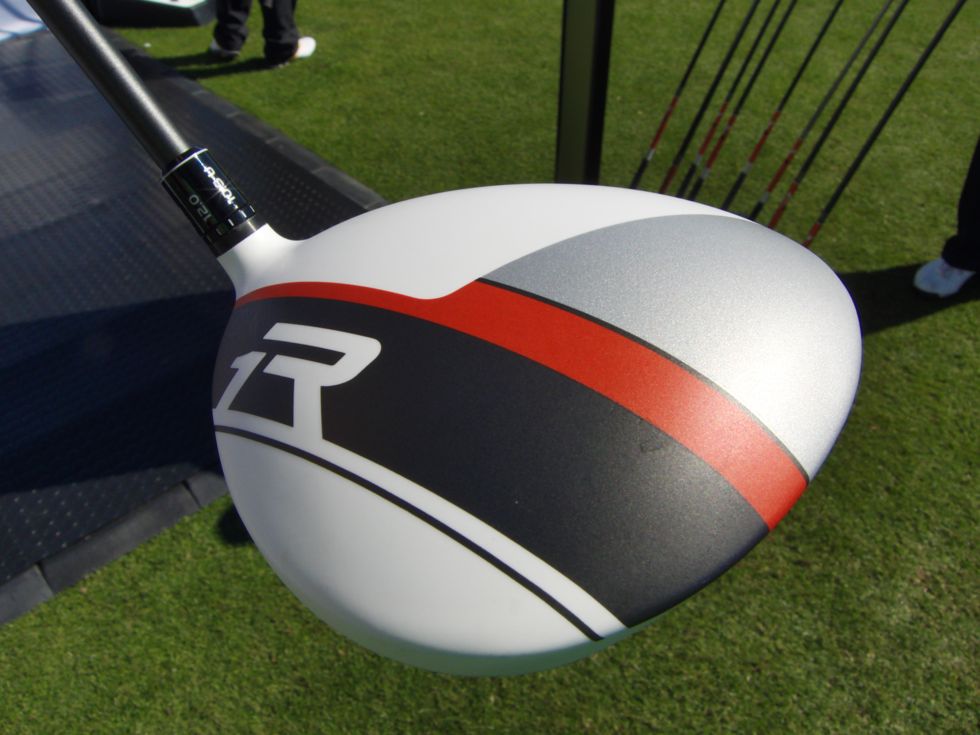
Technology
As with any club TaylorMade makes, they have designed an enormous amount of technology into the driver. For the R1 Driver the first piece of noticeable technology is the capability of the driver to change loft. Prior to the R1 the golfer had the flexibility to change the loft around a degree. With the R1, the golfer can now go from eight degrees to twelve with a single club. The technology that allows this is in the TaylorMade hosel design. There are seven standard lofts and in addition to this five upright loft options available for a total of twelve positions via the loft sleeve. In some of their advertising TaylorMade claimed that 80% of golfers were using the wrong loft on their driver. This could be challenging to verify, but I found it quite a delight to have so much flexibility in my driver.
The next piece of technology the R1 provides is the capability to have seven different face angles. The capability to change the face angle is not new to the R1, as a golfer could change this with the both the R11 and R11S, though there were not as many options as are available now. With the same wrench that one uses to change the loft the golfer now has the capability to change the face using the face angle sole plate. Now at address the clubhead can be set at neutral, open, medium open, maximum open, closed, medium closed, and maximum closed with plus or minus four degrees of adjustment. According to TaylorMade the sole plate is a new design for better wear and visibility. I will be discussing some of the changes in the esthetics section.
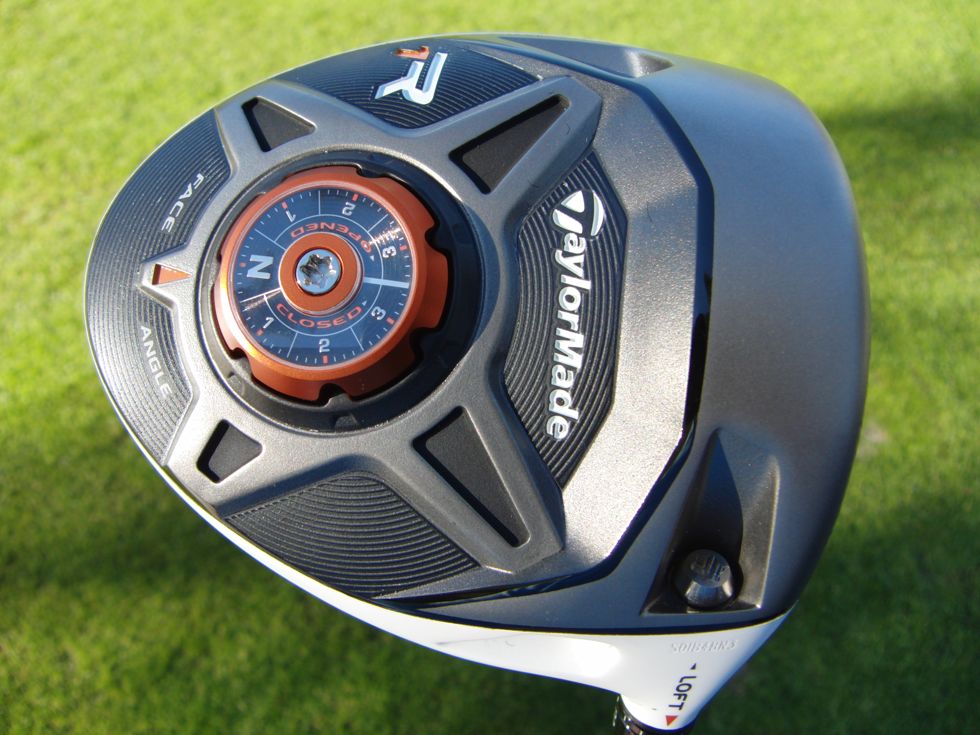
The last piece of adjustable technology is the weights that can be screwed into the head of the driver. Again the wrench that is provided along with the club can be used to move these weights around to help the golfer adjust the ball flight to their preference. In the R1 the weights have been positioned low and forward to increase their effectiveness. The weights that come with the club are a ten gram weight and a one gram weight. TaylorMade states that the weights can be used in a neutral setting where the ten gram weight is inserted in the toe of version of the weight port or in a draw bias position where the ten gram weight is put in the heel port and the one gram in the toe.
One completely new piece of technology that I have never seen in a driver is TaylorMade’s crown graphic technology. According to TaylorMade the design of the R1’s crown graphic helps the player to see and square the face to the ball accurately at address. TaylorMade sights studies that indicate that frequently when a driver face appears square to the golfers eye at address, that in fact that is often an illusion and the face is open which can lead to an unwanted fade or slice. While I have seen this type of technology employed with putters it is truly a first to come directly from the manufacturer with the driver.
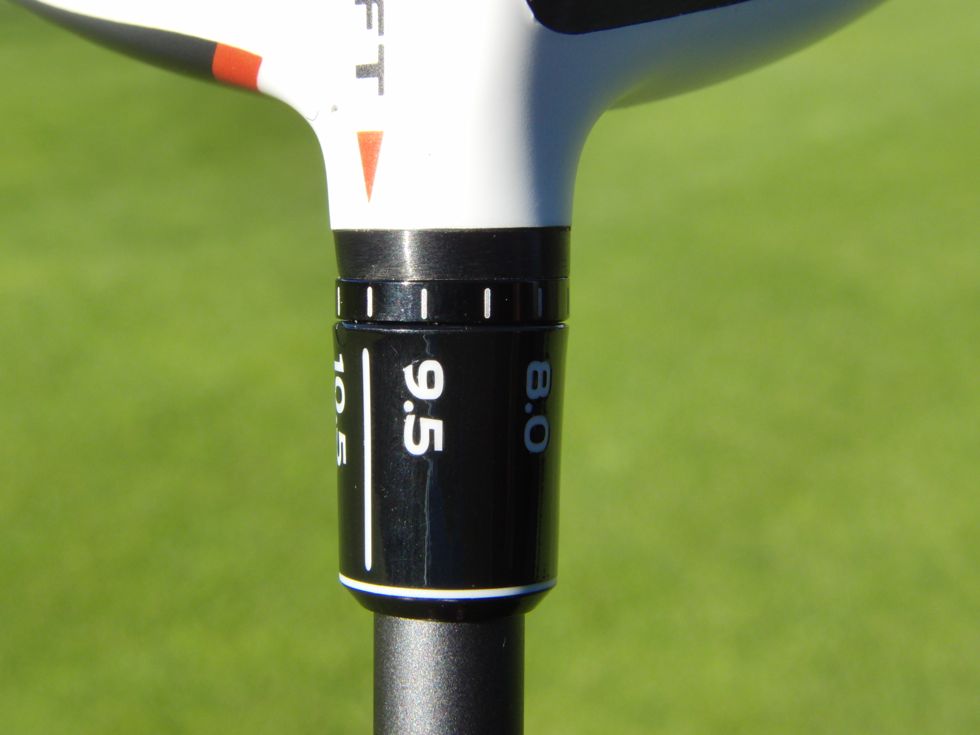
Esthetics
A few years ago TaylorMade went out on a limb and was one of the first to make their entire line of drivers “ghosted” with a white clubhead. Traditional drivers were either done in a grey metallic color or in black. TaylorMade went all in with white. Now with the R1 TaylorMade has even gone a step farther by not only going with white but now putting graphics onto the clubhead. When photos first started surfacing of this new clubhead design the reviews where somewhat mixed. TaylorMade has always pushed the limit with colors and graphics and the top of this clubhead is no different.
When you pick up the club and lay it at address you can clearly see the black, red, and grey graphics in the clubhead. The graphics are done in a triangle shape on the back half of the clubhead with an R1 logo in the right hand corner. Also on the face is a sweetspot designator of TaylorMade’s logo. The first couple of times I used the driver I certainly noticed the graphics but after a while I felt they were not a distraction.

The face of the driver is done in black which is a nice contrast to the white crown of the club. The face has a five grooves which start from the center in the shape of a ball signifying the sweetspot and then five more done on the toe and heel. The grooves look to be more for show that actual utility but still it is a nice design.
Now we can turn the driver over and the bottom of the clubhead has a great deal going on. The first thing you will notice is the newly designed face angle sole plate. Many comments that I saw were that the design reminded them of a compass or a wristwatch. I could easily agree with either of these descriptions. The outer edge of the sole place is done in orange and the inner ring which has the information about how the face angle will be utilized is done in black. One thing I can agree with TaylorMade on is that this sole plate design definitely has better wear. The R11 sole plates I have seen, much of the red paint that is put on the plate has worn off from play. This design has the information under a layer of plastic which should help the dial to be read easier after the club has been played for a while.
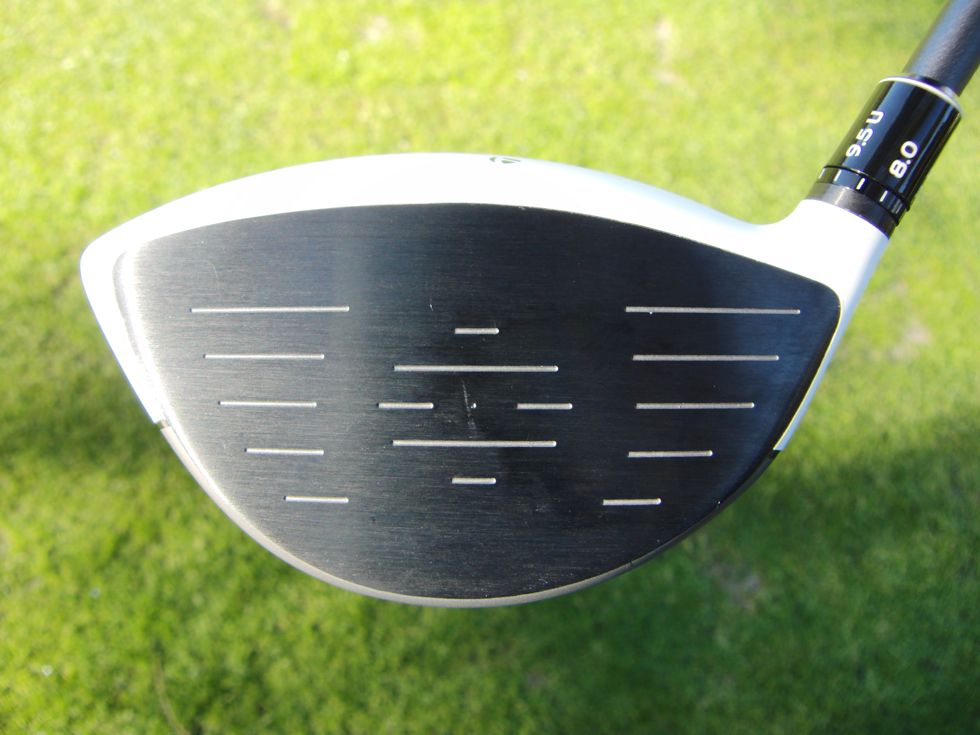
The face angle sole plate screws into a design of four outstretched legs of a star with one of the legs being much shorter and with the letters face angle and an orange pointer letting you know this is the angle for the clubface. The bottom of the club nearest to the face is raised up from this area and is about an inch thick, on either side of this is the weight ports and the whole bottom of the clubhead is black like the face of the club.
On the heel of the club the indicator of which loft the clubhead is set at is there as well as the ferrel which has the actual loft of the club painted into the ferrel. The stock shaft which I used for this review is the Aldila RIP Phenom and the main part of the shaft is done in matte black, but about five to six inches from the grip the color switches to orange. The color scheme of the club is bright, but still the colors are done subtly as not to be overdone.
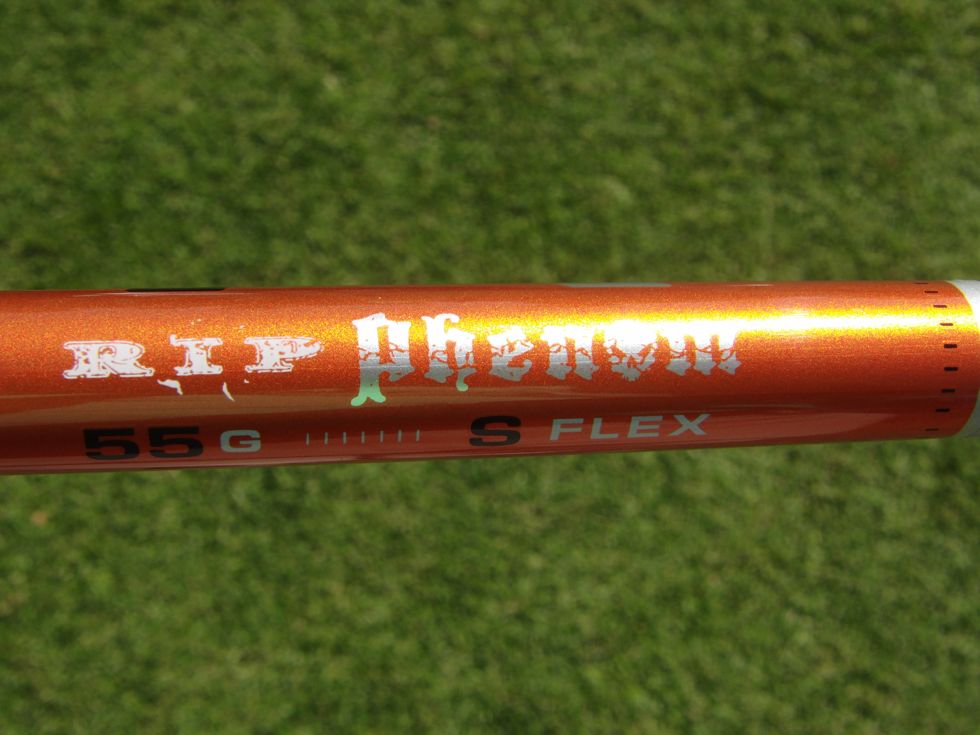
One unique aspect of the R1 is the how the clubhead is shipped to customers. Our very own Michael McLoughlin took some photos when the box arrived at his house in this thread here. Post 90 shows how the driver arrived at Mike’s house. The box used to ship the R1 is about double the width of a traditional box and the clubhead and wrench as in a separate box. The strategy of boxing up clubs seems to be following in the footsteps of iPhone packaging. Still it is a nice touch of class that TaylorMade is adding. The driver used for the review did not have a cover and I have yet to see any pictures of the cover. I would imagine it is done in the color scheme of the clubhead as with most TaylorMade clubs.
Playability and Feel
Of course the most important factor in determining if this club is a good driver is how it performs. The R1 one driver does quite well in this department. I found myself about five yards farther on well hit shots than my current driver, sometimes as much as 10 yards on extremely well hit drives. The clubface has lots of pop and because of the ability to adjust many of the parameters one can easily dial in the trajectory that suits them. In the clubs neutral setting I found the ball to launch a bit higher than with my current driver but I could easily dial that back by lowering the loft of the club. I really liked this feature.
I did not find myself messing much with the weights or the clubface angle sole plate. One interesting note I found on TaylorMade’s website is that when a golfer adjusts the loft down by 1 degree the face opens 2 degrees, and also if you increase the loft by 1 degree it closes the face 2 degrees. If a golfer did not pay attention to this it may leave the clubface open or close thinking they were only adjusting the loft. All of this adjustment capabilities may make a player feel overwhelmed, and if that is the case it is probably better to leave the adjustments to your local PGA Professional or a clubfitter.
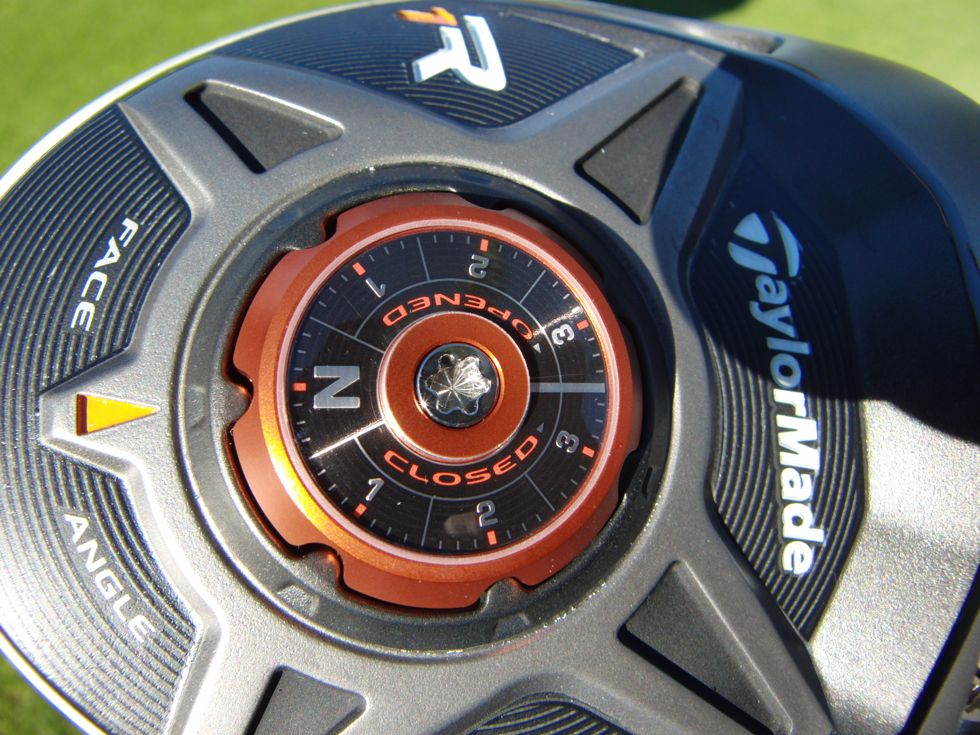
The sound of the clubhead was one of the few drawbacks that I was able to find. It is a little louder than I prefer, more of a high pitched ping than a more muted sound that many of other clubs have today. Still I can easily overcome this when I am five yards closer to the hole, so I would rank it as a minor distraction. Some may feel uncomfortable with how loud the clubhead can sound, but it does not rank as the loudest clubhead out there.
On mishits, the club was excellent on mishits toward the toe, and was more or less average on misses toward the heel. Sometimes if the ball closely missed on the toe the ball showed almost no affect on the overall distance versus a well hit drive. My miss bias is towards the toe of the club so this result was very favorable for my game.
The weight of the club was about average. TaylorMade has experimented with extremely light drivers, but I would rank this club as average. The stock shaft provided with the club is a good match for my swing, but because of the ability to remove the shaft and have TaylorMade provide custom options depending on your personal fit. The driver is fit at 45.5 inches which is around average for today’s drivers. Some are in the 46 inch category, but 45.5 is a good mix for this clubhead/shaft combination.
Conclusion
Many thought that TaylorMade would continue the trend of naming their drivers after the years they were released, R7, R9, R11 and this newest driver would be the R13. TaylorMade went in a slightly different direction naming this driver the R1. TaylorMade also went outside the box in putting the graphics onto the clubhead which had rarely been done because of the worry of distracting the golfer. Although these changes are small they show you that TaylorMade is unafraid of making big changes to the most important clubs in their lineup. They now have a driver that has as much if not more adjustability than any club on the market today. There are a percentage of golfers who do not need all of this adjustability, but many tinkers like myself enjoy this capability.
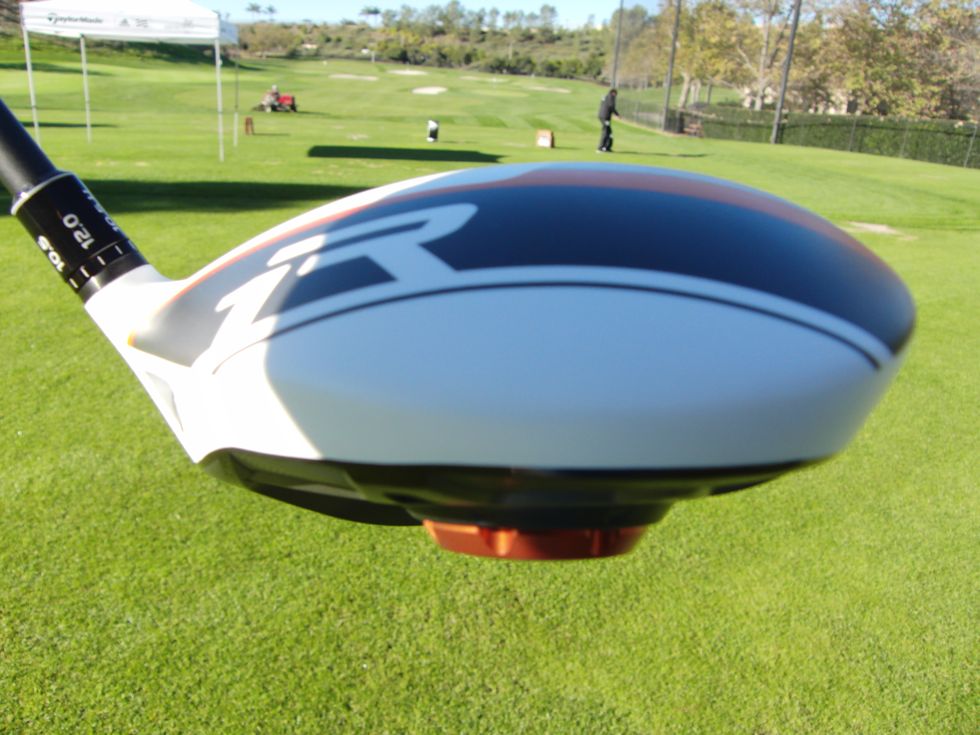
The driver is still extremely high performing as evidence of my drives consistently being farther down the fairway. The graphics at first may put off a number of golfers, but many people thought TaylorMade was crazy to make white drivers and now it is very rare to play in a group of golfers who does not have a white driver. TaylorMade has such a strong presence on the PGA Tour that golfers at home see players using these clubs and see how they perform and issues like this are forgotten.
I would recommend the R1 driver to other golfers but likely those who want the flexibility to adjust the club as much as this club allows. I would bias this club toward better players, but there is nothing preventing mid handicappers who want to tinker with their driver from using this club.

Nice review Mike. I talked to a local fitter the other day and according to him they were getting way better numbers on average from the R1 as opposed to the R11s… I think he said it was like 4mph more ball speed on average.
Tristan, yes, my perspective is that the driver definitely has some pop so I am not surprised to hear those numbers.
I want one of these bad boys. With the shaft that I know I can hit it well with[Fuji Motore Speeder VC 7.0], I would have to buy the TP version as it’s not a option with the basic R1. So I’m looking at $705. That would knock a serious dent in my rat hole money. Still pondering it though.
I have an R11 and from what the reviews say the R1 might be a little more forgiving? Would that be a correct statement?
@lewisgl I would not purchase this driver for the forgiving aspect alone. Having only hit the R11 on the range I would say it is closely equivalent to the R1 with respect to forgiveness. I think you will find that the club is a slightly longer than the R11 and gives you more flexibility with all the adjustments you can make. Don’t get me wrong the R1 is forgiving club just not much more than the R11.
Hit it and liked it. Great sound and feel off the face. Not sure about the shaft. Demoed S flex and I take an R flex. Seemed to carry as far as my Adams 9088UL even with a poor fit. I like the adjustability. Hiked the loft up to 11.25 and adjusted the “compass” so it sat almost square at address. Seemed to work – had the right “look” at address.
I bought the R1 about two weeks ago in regular flex. I’m crushing the ball and it’s usually straight down the middle or a light draw. It has really helped my game.
Bought the R1 in April and have played around with it – new shaft, shorter length (45 in), hot melt, added 1g in heel and toe, and at 11.25 and neutral, it seems to work well. I tee it high and get high launching bombs.
TMAG also has a free R1 app for fitting.
If you are searching for the most forgiving driver, look elsewhere. This driver is for players who have a consistent swing or moving in that direction.
It is not the most satisfying driver in terms of feel or sound. It leaves you empty in that regard. It feels slightly better than the 913, which felt “hard” to me.
It can be a low spinning driver, depending on shaft, so it’s okay to move up in loft and open the face angle. Use the App to fine tune. Weights are about $14 each, and available at the store or aftermarket (1/2 the price) on the ‘bay.
As to the head and decals, I like them. But I embrace some change. The white and decals make the head appear large, which helps confidence.
I haven’t purchased the R 1, still loving my R 11. I was waiting for Taylor Made (now they’re waiting on me, or us) having released their new and “improved” SLDR driver. I tested the SLDR and without doubt will be giving up anywhere from 5 – 15 yards, I’m guessing. I did that when I chose the R 11 over the Rocketballz driver, but on Par 5s if needed I get that yardage with TMs Stage 2 RocketballIzier 3 wood or I crush the TM 5 wood (like any of us will). Sweet clubs and what distance… To this end, very nice review. I believe I may be sold, one big obstacle, prefer my R1 to come in TP RIP Stiff 60 g m (B) shaft, or specs close thereto without the unaffordability factor hitting me like a bunker fried egg lie.
what happens if i reverse the weights on my ri driver?